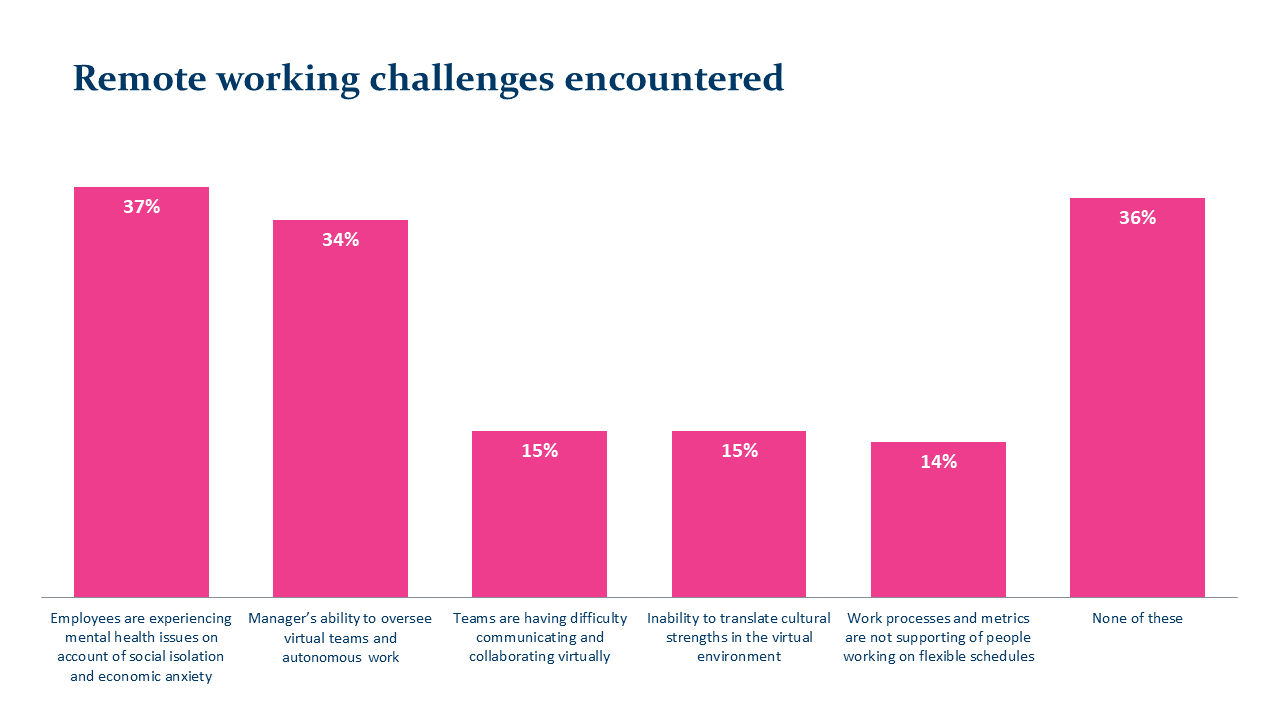Creating a culture of health has been a top-three priority for employers for the past few years, according to Mercer’s National Survey. Now, with large numbers of employees working remotely, many of the tactics employers used to build a culture of health – on-site screenings and health fairs, healthy food options in the company cafeteria, fitness centers and so on -- are no longer available to them. In a recent survey, we asked more than 750 employers about the challenges of remote working and what they are doing to try to support employees in their ‘new’ work environments – their homes. Here’s what we learned.

Mental health & well-being support
Over a third of responding employers (37%) said that their employees are experiencing mental health issues on account of social isolation and economic anxiety. While most respondents (85%) said they are now communicating reminders about existing employee mental health programs, 30% are taking steps to introduce new programs specific to employee mental health.
Staying connected
In the absence of lunch n’ learns, office happy hour events, and even just the chance to chat in the hallway, employers are looking for ways to facilitate social connection among their employees. More than half (56%) of responding employers have set up social time for remote workers, such as virtual coffee and tea breaks, and/or reminders to attend to well-being, such as yoga moments. Some responding employers (15%) indicated that a remote working challenge they’ve encountered is that teams are having difficulty communicating and collaborating virtually. To help ensure that technical issues are not creating or compounding communication challenges, employers can reimburse internet expenses and work from home equipment for employees who do not typically work remotely (19% of respondents are doing so).
Child care
With schools and daycare facilities closed and many summer camps and programs preemptively cancelled, working parents are juggling additional child care responsibilities. In a prior survey of about 600 respondents conducted in April, two-thirds (66%) had given employees the flexibility to work outside of traditional working hours. On the other hand, only 5% of respondents in our most recent survey are providing childcare allowances to be used at employee discretion due to school closures. Not surprisingly, childcare allowances are more common in industries like healthcare, where workers must report to a worksite (16% of healthcare respondents provide an allowance). But if employees with children are to remain productive and engaged as they continue to work from home over the next few months, employers may need to prioritize some form of childcare assistance.
Even though lock-downs and social distancing guidelines are gradually being relaxed, the reality is that many employees will continue to work from home for months to come. In the early phase of the pandemic, employers adapted quickly to support their employees and their new work environments. With remote working now part of our new normal, employers will need to check in with remote workers and continue to adapt if they are to ensure that the company culture of health extends beyond the walls of the worksite.




